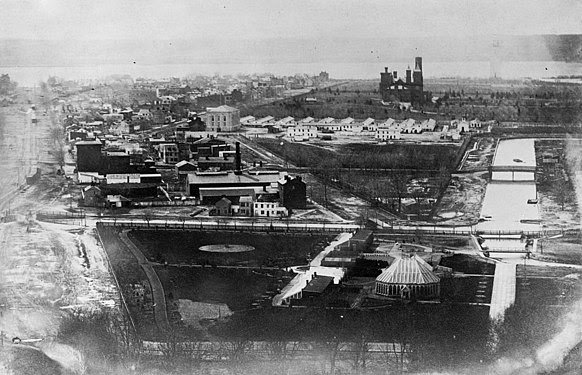The "City Beautiful" movement determined the National Mall of today
In the early 1900s, the brith of urban planning came with the City Beautiful movement. Following the great Columbian Exposition designed by Daniel Burnham in Chicago, Washington D.C. notables created the MacMillan Plan for the National Mall.
The movement promoted beauty not only for its own sake, but also to create civic virtue among city dwellers
Led by the upper middle class concerned with progressive social reform, the movement flourished during the 1890s and 1900s. They believed that beautification including monumental grandeur could promote a harmonious social order that would enhance the quality of life.
(I can't help but pause here to reflect on how our infrastructure molds our societal patterns and behaviors. Ex: Life where I live in Southern California is only possible because of the redirection of water resources from far away. What comes to mind for you?)
Under the MacMillan Plan Victorian was out and Neoclassical and Beaux-Arts were in
The 1910 National Museum (now Natural History Museum) ...
shows the Neoclassical Greek and Roman influences. Designed by one of the Plan's creators, it was followed in style by the Lincoln Memorial, the National Gallery of Art, the Supreme Court, and last, the Jefferson Memorial.
The Smithsonian Castle ...
designed by James Renwick is part of the Romanesque and Gothic revival (styles all considered "Victorian" because of their popularity during Queen Victoria's 60-year reign.)
The Plan's radical redesign replaced the Mall greenhouses, gardens, trees, and commercial/industrial facilities with a long and broad expanse of grass, lined with American elm trees. Basically, the Mall we experience now.
The Plan's new buildings followed decades of infrastructure improvements. The Mall was once shorter, flooded, and had a fetid canal and smoke-spewing railroad crossing it.
Notice the proximity of the Potomac to the Washington Monument
- which meant it flooded the area. The Canal across the city - which turned and ran down to the Anacostia River making the Mall an island - is now a sewer in part under Constitution Avenue.
Expand this photo from 1863
In the foreground, to the right is the Conservatory (later Botanic Garden.) Behind that, stretching across are the train tracks. The white sheds beyond are the Armory Hospital of the Civil War. Behind that, the Smithsonian in the distance.




